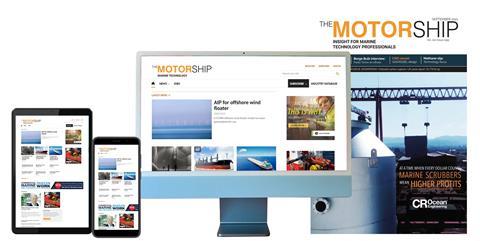- News
- Subscribe

Get full access to The Motorship content
Including the digital magazine, full news archive, podcasts, webinars and articles on innovations and current trends in the shipping industry.
- Expert analysis and comment
- Unlimited access to in-depth articles and premium content
- Full access to all our online archive
Alternatively REGISTER for website access and sign up for email alerts
- White Papers
- Industry Database
- Events

Propulsion & Future Fuels Conference 2025
The Motorship’s Propulsion & Future Fuels is the leading international conference on powering shipping’s emissions-cutting ambitions.
The 2025 Conference will take place from 25th - 27th November in Hamburg, Germany and will offer a meeting place to learn, discuss and knowledge-share the latest developments in efficient power and propulsion technology plus alternative low flashpoint and low carbon fuels.
Click here for more information
Exclusive: LNG as a future fuel: ‘And that’s just chemistry’

Ammonia and methanol dominate discussions about the future of maritime fuels but David Stevenson speaks to SEA-LNG about liquid natural gas, the most common choice for lower carbon ships, to see what role it might play in decarbonisation.
“For all alternative fuels, you’re on a pathway. For LNG, it’s exactly the same pathway. You start with LNG, and you go to liquefied biomethane, then liquefied e-methane. It’s the same as the methanol pathway, it’s the same as the ammonia pathway, it’s the same as the hydrogen pathway,” says Steve Esau (pictured), chief operating officer of SEA-LNG before adding rather ominously: “there’s been a very successful campaign to discredit LNG in many circles”.
Last summer Bloomberg published The invisible climate impact of a cruise ship an article regarding LNG-powered vessels’ emissions impact “still being understood” in light of methane slippage evidence. Esau says that while methane slip is a “recognised issue”, there are nuances that should be considered.
Continue this article…
Already subscribed? SIGN IN now

Register for a FREE one-month trial to continue this article
Want to read more before deciding on a subscription? It only takes a minute to sign up for a free account and you’ll get to enjoy:
- Weekly newsletters providing valuable news and information on the shipping sector
- Full access to our news archive
- Live and archived webinars, podcasts and videos
- Articles on innovations and current trends in the shipping industry
- Our extensive archive of data, research and intelligence
Get more free content sign up today
Ready to subscribe? Choose from one of our subscription packages for unlimited access!

